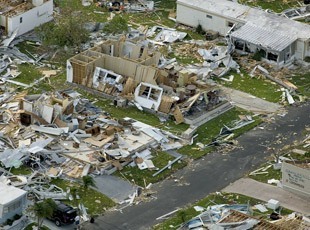Whether it’s a tornado in the Great Plains, an earthquake on the West Coast, or a hurricane affecting states along the Atlantic, cleaning up after a natural disaster requires special attention and proper planning in order to ensure safety for all those involved.
“Recovery work should not put you in the hospital emergency room,” said Kurt Petermeyer, OSHA’s regional administrator in Atlanta. “A range of safety and health hazards exist following storms. You may minimize these dangers with knowledge, safe work practices and personal protective equipment. OSHA wants to make certain that all working men and women, including volunteers, return home at the end of the workday.”
In the aftermath of a natural disaster, the duties and responsibilities change and the risk increases. Hazards should be properly identified, evaluated, and controlled in a systematic manner to reduce or eliminate occupational safety and health risks to response and recovery workers.
In light of the recent flooding in the Carolinas, the US Department of Labor sent out a news release urging storm recovery workers and public to be vigilant and aware of hazards during storm cleanup.
Whether it’s the cleanup efforts to come, the demolition activities, or repairs, all post-disaster efforts should be done by workers provided with the proper training, equipment and experience.
In OSHA’s dedicated disaster recovery page, it highlighted some of the potential hazards associated with the recovery efforts:
- Hazardous driving conditions due to slippery and/or blocked roadways
- Slips and falls due to slippery walkways
- Falling and flying objects such as tree limbs and utility poles
- Sharp objects including nails and broken glass
- Electrical hazards from downed power lines or downed objects in contact with power lines
- Falls from heights
- Burns from fires caused by energized line contact or equipment failure
- Exhaustion from working extended shifts
- Heat and Dehydration
To combat the hazards, the news release highlighted these six protective measures.
- Evaluating the work area for hazards.
- Employing engineering or work practice controls to mitigate hazards.
- Using personal protective equipment.
- Assuming all power lines are live.
- Using portable generators, saws, ladders, vehicles and other equipment properly.
- Heeding safety precautions for traffic work zones.
Learn more using the related resources
- Demolition and Cleanup OSHA Fact Sheet
- Portable Generator Safety
- Chain Saw Safety
- Work Zone Traffic Safety
- Downed Electrical Wires
Protecting workers, whether volunteers, contractors, subcontractors, or employees should be a top priority of all those involved during the recovery process. Optimum Safety Management cares about the safety of all those involved in the cleanup and recovery, and hopes that all efforts are safe, efficient, and effective.








